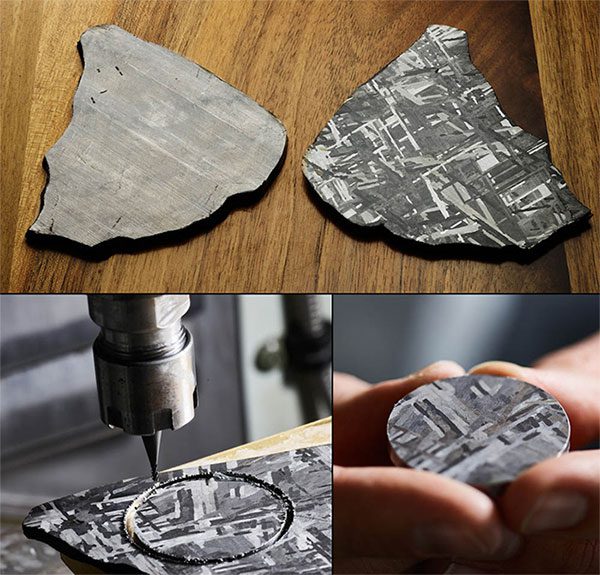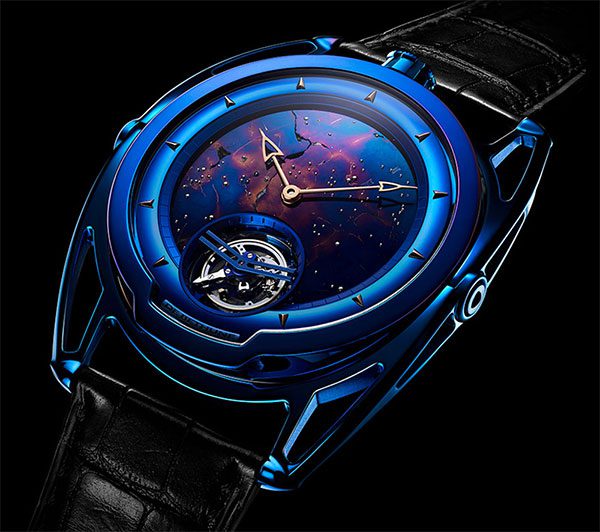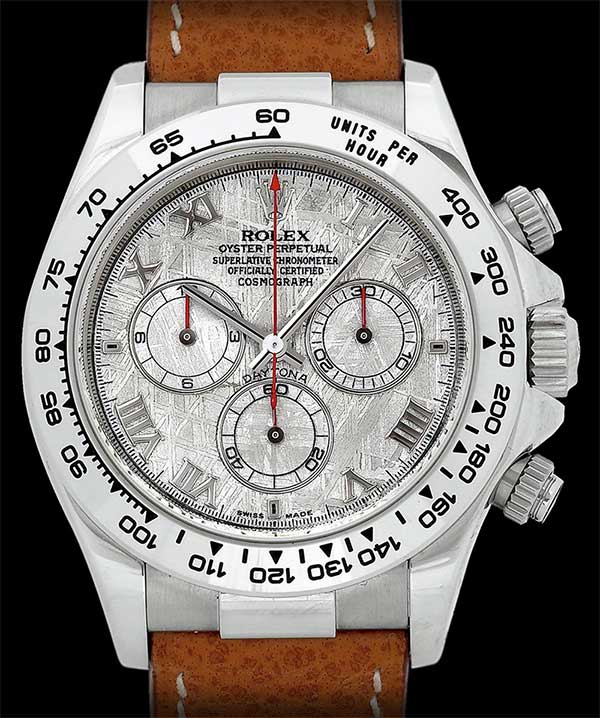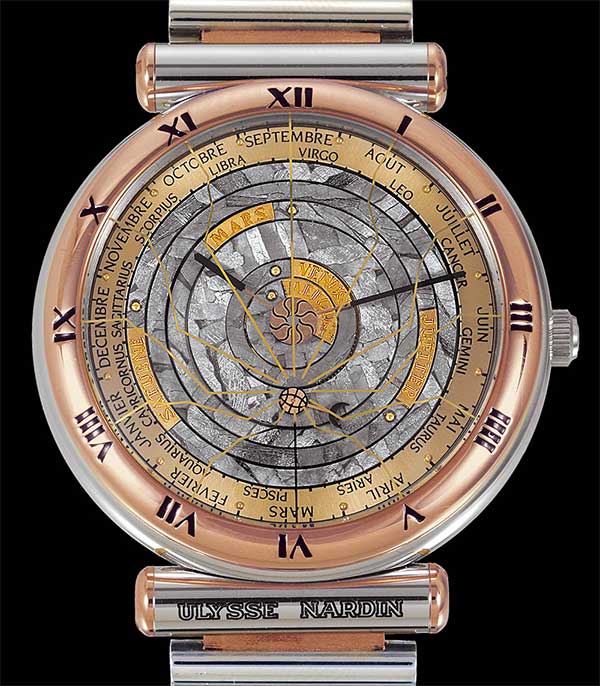This is a piece of rock that was formed billions of years ago, traveling across the universe before finally landing on our wrist.
It’s a fascinating idea. That piece of rock, or in other words – a meteorite, is the ideal material for crafting luxury watches, not only because of its unique appearance but also because it carries a story, an incredible and mystical journey.

Production of Romain Gauthier watch dials from meteorite. (Photo: FHH Journal)
Since ancient times, the Egyptians created the solar calendar by observing the changes in the rising time of Sirius (or the Dog Star – the brightest star in the night sky). Later, the Romans used the Moon to measure time, and humanity has always looked to the high sky, observing celestial bodies to determine time.
Today, the use of a type of material from extraterrestrial bodies in watches may still be relatively new, but it is precisely how we trace back to the origins of timekeeping. A fashionable material is being promoted by luxury watch brands worldwide, which consists of meteorite fragments that have fallen to Earth thousands or millions of years ago.
Meteorites, a material that seems reserved for archaeologists or planetary scientists, can now be worn by anyone passionate about watches or simply someone who enjoys carrying thoughts of the deep and mysterious universe.

The DeBethune Dream Watch 5 Meteorite features a case made from meteorite that fell in Argentina, treated thermally to achieve the signature blue of the DeBethune line.
Perhaps we all know that meteorites mined today come from a comet or asteroid that has fallen to Earth. The largest meteorite discovered in 1920 in Namibia weighs about 60 tons and is named Hoba, which likely fell to Earth around 80,000 years ago.
There are three types of meteorites, distinguished by the content of rock and iron-nickel alloys within. Among them, stony meteorites account for up to 94% of all meteorites on Earth, iron meteorites make up 5%, and stony-iron meteorites comprise the remaining 1%. However, in the watch industry, manufacturers only use iron meteorites, which contain a high percentage of iron-nickel alloys, to craft various components.
Since meteorites are very rare, special, and peculiar, some may wonder: “Aren’t meteorites strictly protected for research purposes? How do luxury watch brands get their hands on this scarce material for mass production?”
The answer is that luxury watch brands are also masters at sourcing rare materials. From Jaeger-LeCoultre, Hermès, Parmigiani to Rolex, all have released watch models featuring meteorite dials, and some have even created watches with meteorite cases.
These timepieces and their prices indicate that meteorites are indeed a luxury material, perhaps akin to precious metals. However, meteorite dials can also appear on several more affordable watch models. The brand Zelos has launched watches with meteorite dials in various collections priced around $1,000.

The Rolex Cosmograph Daytona with a meteorite dial.
In other words, meteorites are not as rare as we might think. Moreover, since the watch dials are quite small and thin, and most of these luxury watches are produced in limited quantities, watch brands do not seem to deplete the precious meteorite supply in the world. In fact, being safely placed behind sapphire glass is one of the best ways to preserve the fascinating material of meteorite.
After billions of years of being bombarded by various space debris, Earth now has a significant supply of meteorite, frequently sought after by watch companies. A typical example is the Gibeon meteorite from Namibia, which is a fragment of a celestial body from the belt between Mars and Jupiter; or the Muonionalusta meteorite that struck Sweden. In both locations, many meteorite fragments are scattered over a wide area, with some pieces being quite large. A meteorite that falls in a field may look like a giant ore with a pockmarked surface, but when cut and processed through special procedures, that piece of rock reveals unique surfaces.

The Ulysse Nardin Planetarium Nicolaus Copernicus watch features a meteorite dial.
Meteorites come in many types with different compositions, but types like Gibeon and Muonionalusta are the best choices for fashion product crafting. Having meteorite fragments in hand, the work of the watchmaker becomes truly intricate.
First, they must cut along different planes to observe various patterns, with some angles showing straight lines, others presenting random interfaces, and the rest displaying zigzag shapes.
After polishing and cleaning, several chemicals, such as nitric acid, are used to highlight the contrast between the different components of the meteorite. Because of its completely natural structure, with varying roughness or smoothness between different components, when used in watchmaking, meteorite creates a unique appearance.
The art of watch collecting reaches new heights when combining the beauty of time spanning millions of years from a piece of meteorite with the intricate mechanical craftsmanship of skilled artisans.





















































